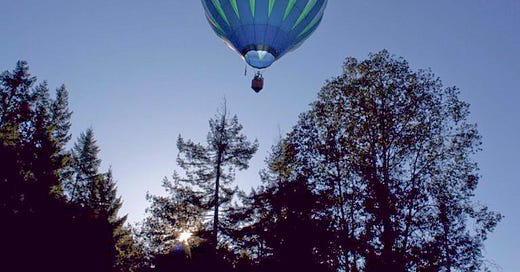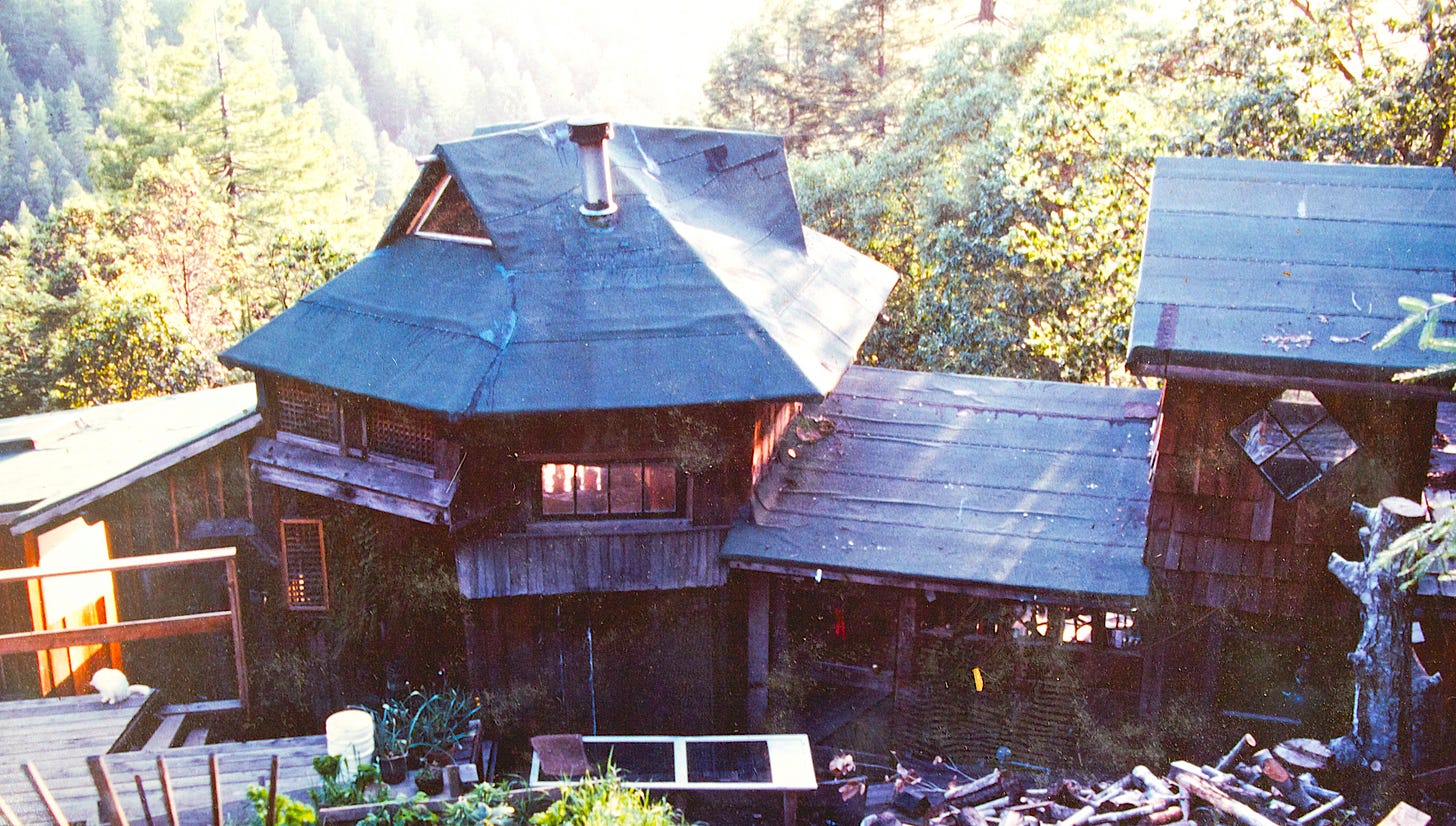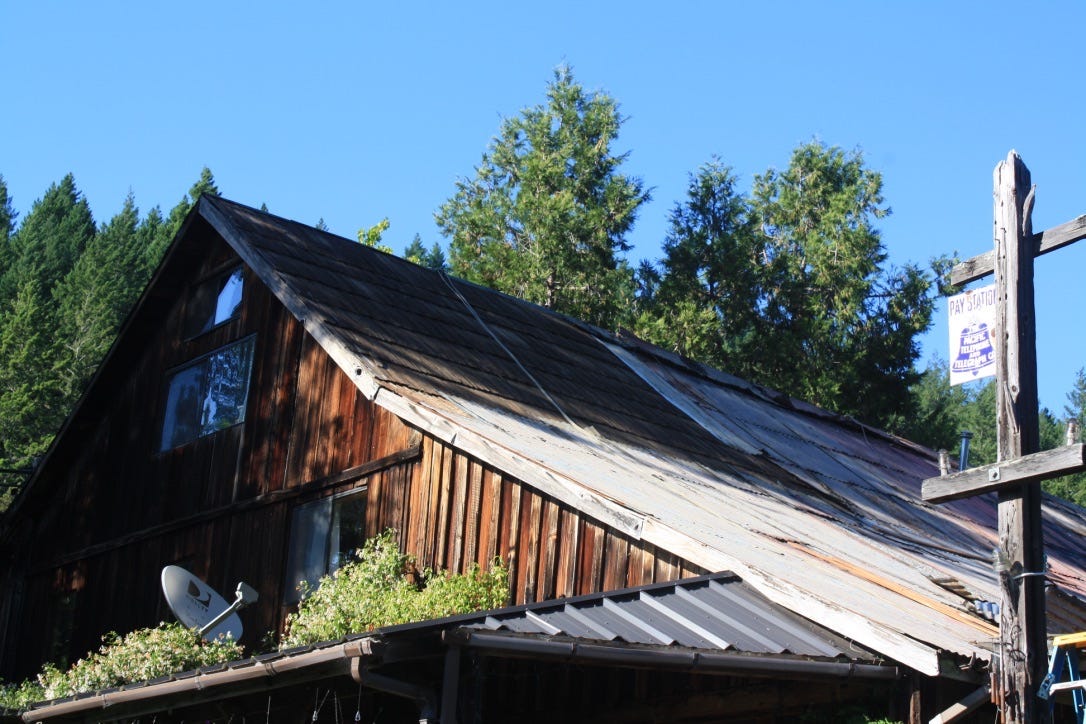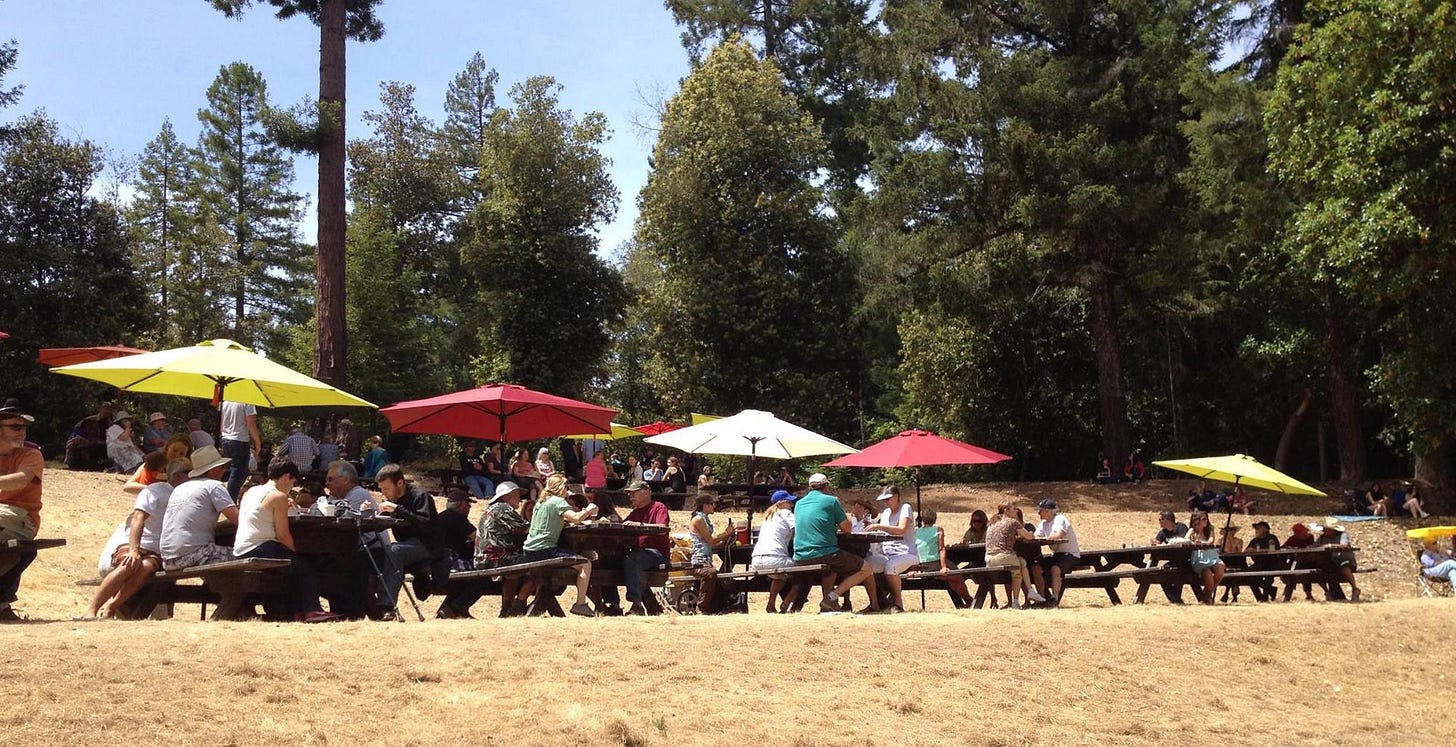America’s back-to-the-land movement population was over a million strong, scholars estimate. The Seventies era turn-around migration, the topic of an earlier post, meant more people migrated from urban to rural living, reversing the long trend toward city life.
Among rural communities across the country that experienced a turn-around migration influx, research finds that many back-to-the-land newcomers are now resident old-timers. This counterculture sub-group planted deep roots and committed themselves and their families to developing their land for the long term.
Comptche is a case study of this trend, with back-to-the-landers who settled in the 1970s still living there today. Parcels of land bought back then now support multigenerational living, some places are off the grid. All work their land in some capacity. The intention of back-to-the-land homesteading was to live off the land as much as possible, but starting in the 1980s, most went to work, such as teaching and carpentry, and earned income in myriad creatives ways.
As found in this and other research, the back-to-the-land population tended to be from middle class origins, many having education and access to resources. This was true in Comptche, where forest fires in the 1960s created a void that left small farms up for sale. My family bought a five-acre farm. Other newcomers were able to acquire land and built intentionally simple cabins. A number of them renovated old redwood barns into homes. Continuing the work on their innovative abodes over the decades, these homes are now spectacular even in their subtlety.
The Comptche Volunteer Fire Department (CVFD) has made it a safer place because residents are informed about maintaining defensible space around their structures and practice fire prevention in land use and construction—such as metal roofing.
Comptche’s old-timer residents and back-to-the-landers, now elders, share an endearing commitment to land and each other. Community members get along. On some issues, they agree to disagree. Over other issues, they meet, discuss, and vote.
During process of creating their town’s General Plan in the mid-1970s, community members discovered they had far more in common than they assumed. These commonalities became metaphorical common ground. To this day, the community is enhanced through these shared values they identified, discussed in earlier posts.
Comptche’s civil commons, the physical common ground, is vast. It encompasses open land and community buildings. Specific places include: the post office and its bulletin board full of community messages, the redwood log bench for visiting on the store’s porch, the K-4 Comptche School, the Church of the Redwoods, and Comptche Community Hall.
The most crucial common ground in all senses is the Comptche Volunteer Fire Department. It’s a vital civic organization providing fire and emergency first-responder services. The CVFD also provides communitas at the firehouse, a place with gathering grounds for fundraisers and events including music and dancing.
The Montgomery Redwood Reserve protects steep forested land between Comptche and Ukiah for wildlife, people, clean air, fresh water, the future. While easy to overlook, the narrow ribbon of roadway winding from Ukiah to Mendocino is common ground.
It’s not just a way to get over the mountain or to the coast, it also tells the region’s history, a path laid by the Pomo as their migration path from winter to summer village of Buldam at the mouth of Big River. Comptche was the mid-way camp on their annual journey, where they processed abalone in the creek, drying their summer fishing harvest on rocks in the autumn sum. These are the same creeks where generations of Comptche kids swim, where the old-timers complained the hippies swam as “nudies”.
Some properties privately held are valued by all community members: the Comptche Store, is the most important. Also enjoyed by all even though on private land are the trees, creek beds, swimming holes, dirt roads, grasslands, horses, cattle, and other livestock, small-scale agriculture, historic homesteads, Pomo artifacts, mill shacks, former abodes of rock musicians, and remodeled redwood barns. All of these things enhance the community, making it interesting.
While Comptche’s civil commons has a multitude of physical attributes, it also includes ephemeral qualities as found in the region’s historical narrative, such as the unique relationship between the Pomo and pioneers, and then the clash between back-to-the-land hippies and old-timers.
Shared values among locals are another aspect of common ground, such as shared reverence for the natural world, and the choice to live simply and live with less. A key value is that every resident is a stakeholder: wildfires, corporate logging, a proposed airstrip, tourists, and trespass are examples of shared concerns that bring residents together for discussion, deliberation, and potlucks.
The presence of this intentional civic commons is a significant reason why people live in Comptche. The common ground of shared values and civic space is dynamic. It provides a rustic and robust social life based on a shared commitment to community resources and safety. This creates and sustains community resilience.
Up Next: 7.6 Resilient Community - a Microcosmic Model
Jacob, 1997. New Pioneers: The Back-to-the-Land Movement and the Search for a Sustainable Future.
Roszak, Theodore, 2009. The Making of an Elder Culture.
Spicer, Lisa Gruwell, 2012, c 2024. Finding Common Ground: When the hippie counterculture immigrated to a rural redwood community.
Sumner, Jennifer, 2005. Sustainability and the Civil Commons: Rural Communities in the Age of Globalization.














I like the picture of the red barn and enjoyed learning more about the history of Comptche. May the strength of community collaboration and sustainable farming continue.